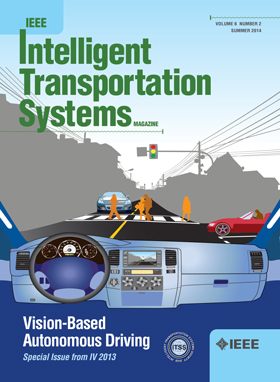OCV-SOC-Temperature Relationship Construction and State of Charge Estimation for a Series– Parallel Lithium-Ion Battery Pack
IF 8.4
1区 工程技术
Q1 ENGINEERING, CIVIL
IEEE Transactions on Intelligent Transportation Systems
Pub Date : 2023-03-16
DOI:10.1109/TITS.2023.3252164
引用次数: 30
Abstract
Accurate state of charge (SOC) estimation of a battery pack is more meaningful than that of a cell in practical applications. The existing methods are difficult to provide an accurate SOC of a battery pack under a wide range of temperature due to cell inconsistency. In this paper, a SOC estimation method for a series-parallel lithium-ion battery pack based on the newly constructed OCV-SOC-temperature relationship was proposed. In the proposed method, firstly the cosine similarity is used to quantify cell inconsistency and the representative cells in the battery pack are determined by the largest cosine similarity value. Secondly, the OCV-SOC curves of the representative cells at different temperatures are used to construct the OCV-SOC-temperature relationship of the battery pack. Finally, a multi-branch fusion method is developed to estimate the SOC of the battery pack through the SOC of each branch by means of a Bayesian probability formula. The effectiveness of the newly constructed OCV-SOC-temperature relationship and the proposed SOC estimation method of the battery pack is verified under various dynamic conditions. The estimated SOC error of the series–parallel battery pack is less than 1.5%, which is approximately 60% lower than the traditional methods.串并联锂离子电池组ocv - soc -温度关系构建及充电状态估计
在实际应用中,对电池组的荷电状态(SOC)进行准确估计比对单个电池的荷电状态进行准确估计更有意义。由于电池的不一致性,现有的方法很难在广泛的温度范围内提供准确的电池组SOC。本文提出了一种基于新构建的ocv -SOC-温度关系的串并联锂离子电池组荷电状态估计方法。该方法首先利用余弦相似度对电池不一致性进行量化,利用最大的余弦相似度值确定电池组中的代表性电池;其次,利用代表性电池在不同温度下的OCV-SOC曲线,构建电池组的OCV-SOC-温度关系;最后,提出了一种多支路融合方法,利用贝叶斯概率公式通过各支路的荷电状态估计电池组的荷电状态。在各种动态条件下验证了新构建的ocv -SOC-温度关系和所提出的电池组SOC估计方法的有效性。串联并联电池组的SOC估计误差小于1.5%,比传统方法降低约60%。
本文章由计算机程序翻译,如有差异,请以英文原文为准。
求助全文
约1分钟内获得全文
求助全文
来源期刊

IEEE Transactions on Intelligent Transportation Systems
工程技术-工程:电子与电气
CiteScore
14.80
自引率
12.90%
发文量
1872
审稿时长
7.5 months
期刊介绍:
The theoretical, experimental and operational aspects of electrical and electronics engineering and information technologies as applied to Intelligent Transportation Systems (ITS). Intelligent Transportation Systems are defined as those systems utilizing synergistic technologies and systems engineering concepts to develop and improve transportation systems of all kinds. The scope of this interdisciplinary activity includes the promotion, consolidation and coordination of ITS technical activities among IEEE entities, and providing a focus for cooperative activities, both internally and externally.
 求助内容:
求助内容: 应助结果提醒方式:
应助结果提醒方式:


